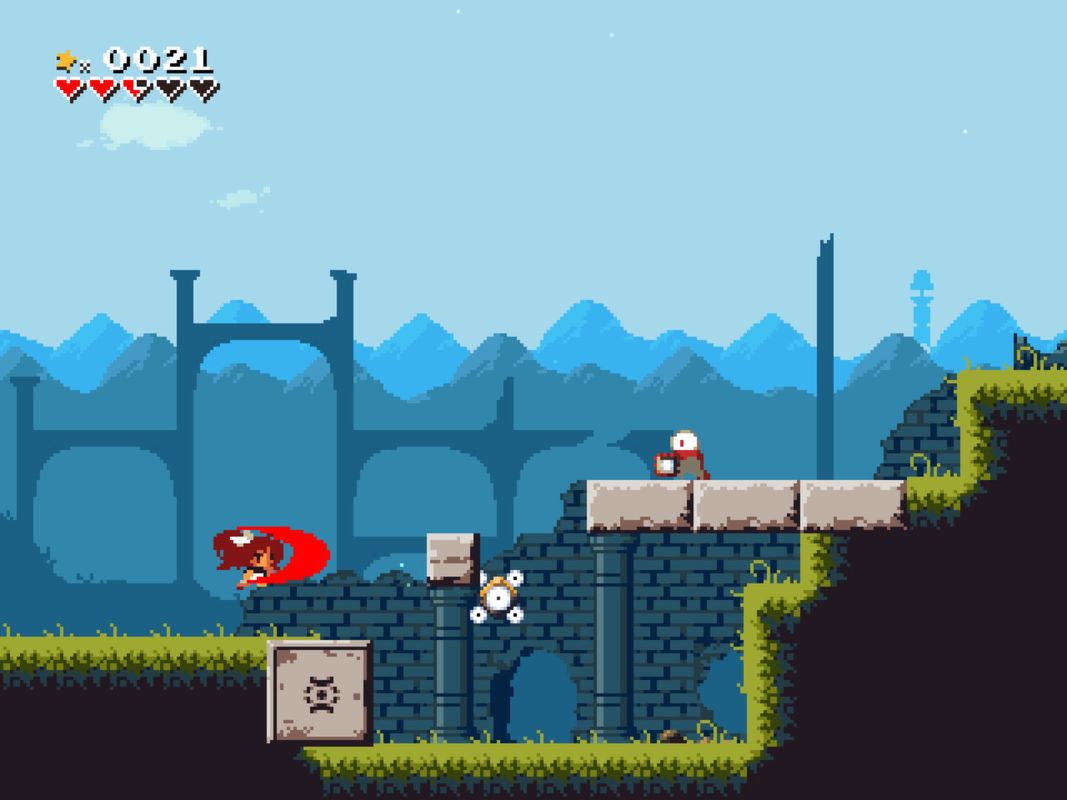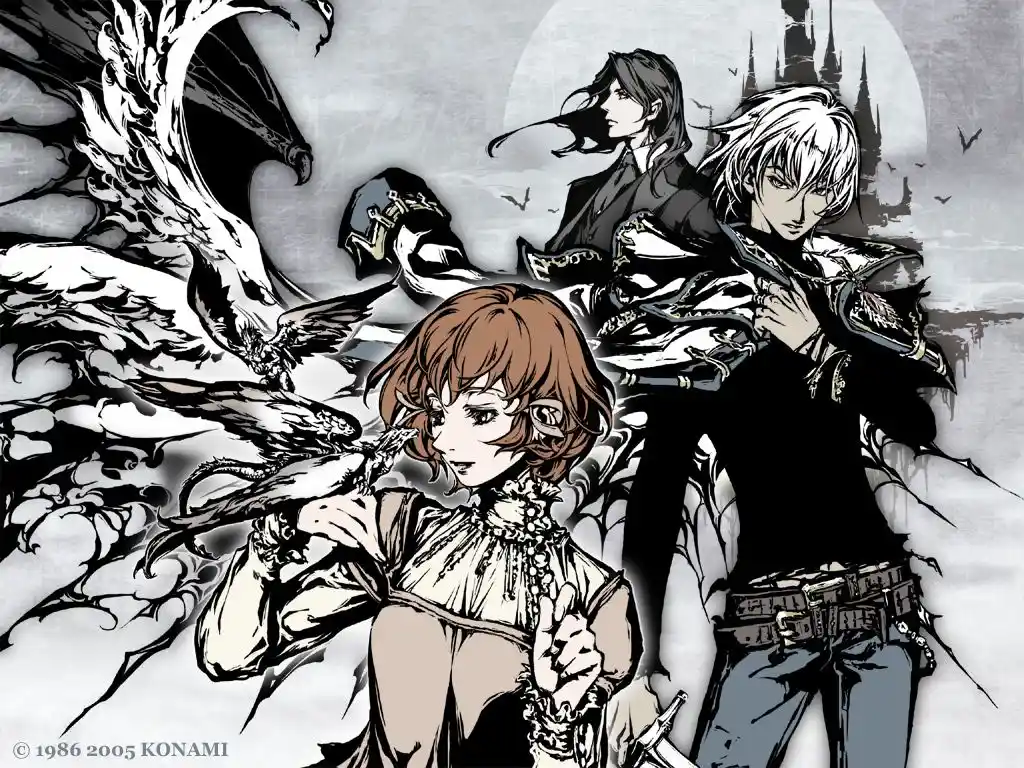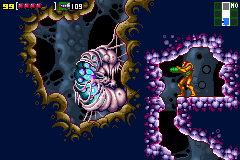Results
Momodora III
igavania, pixel art, challenging
Momodora III, released in 2014, is a metroidvania-style action-platformer game developed by the independent studio Bombservice. Here's a description tailored for someone familiar with the genre: The game takes place in the cursed land of Karst, where an evil sorcerer has unleashed a plague that turns people into monsters. You play as Kala, a priestess tasked with purifying the land and lifting the curse. Momodora III features a nonlinear, interconnected world that encourages exploration and backtracking. As you progress, you'll acquire new abilities and weapons that allow you to access previously inaccessible areas, encouraging revisiting old locations. The game is known for its challenging combat system, which requires precise timing and pattern recognition to overcome formidable bosses and enemies. Kala's movesets are relatively simple but highly effective when mastered, emphasizing skill over complex button combinations. The pixel art visuals are stunning, with intricate backgrounds and detailed character sprites that bring the cursed land of Karst to life. The soundtrack, composed by Kyou Takada, is atmospheric and complements the game's somber tone. One standout feature of Momodora III is its emphasis on environmental storytelling and minimalist narrative. The game's lore is conveyed through item descriptions, environmental clues, and character interactions, leaving much open to interpretation and fostering a sense of mystery. While not overly long, Momodora III offers a satisfying level of challenge and replayability, with multiple difficulty settings and a New Game+ mode that unlocks additional content and challenges.
Castlevania: Dawn of Sorrow
igavania, challenging, hidden areas
Castlevania: Dawn of Sorrow is a metroidvania-style action-platformer game that was released for the Nintendo DS in 2005. Developed by Konami, it serves as the direct sequel to Castlevania: Aria of Sorrow and continues the story of Soma Cruz, the protagonist from the previous game. One of the key features of Dawn of Sorrow is its innovative "Tactical Soul" system, which allows Soma to absorb the souls of defeated enemies and utilize their abilities. This mechanic adds a significant depth to the gameplay, encouraging players to experiment with different soul combinations to unlock new powers, spells, and movement abilities. The game takes place in a mysterious realm called the Dark World, which has emerged within a European city. Soma must explore this labyrinthine environment, uncovering its secrets and facing formidable bosses, including powerful reincarnations of past Castlevania villains. Dawn of Sorrow introduces a new feature called the "Magic Seal," which allows Soma to use specific souls to reveal hidden paths and unlock new areas, adding an extra layer of exploration and backtracking to the game's intricate level design. The game's visuals are impressive for the Nintendo DS, featuring detailed sprite work and atmospheric lighting effects. The soundtrack, composed by Michiru Yamane, is a standout, blending haunting melodies with intense battle themes that capture the game's gothic atmosphere. Additionally, Dawn of Sorrow includes a variety of gameplay modes, such as a Boss Rush mode and a Julius Mode, which allows players to experience the game from the perspective of Julius Belmont, a renowned vampire hunter from previous Castlevania titles.
Metroid: Zero Mission
sci-fi, pixel art, challenging
Metroid: Zero Mission is a remake and reimagining of the original 1986 Metroid game for the Nintendo Entertainment System. Developed by Nintendo R&D1 and released for the Game Boy Advance in 2004, Zero Mission serves as a comprehensive update to the classic title, featuring enhanced graphics, improved gameplay mechanics, and a significant expansion of the original game's narrative and level design. One of the standout features of Zero Mission is its attention to detail in preserving the essence of the original Metroid while introducing modern sensibilities. The game maintains the iconic exploration-based gameplay and power-up acquisition that defined the series, but refines it with more fluid controls, updated physics, and a more intuitive user interface. Zero Mission's level design is a highlight, seamlessly blending the classic areas from the NES game with entirely new sections that expand the scope and depth of the adventure. These additions include new boss battles, hidden areas, and intricate sequences that test the player's platforming and combat skills. The game also features a dedicated stealth segment, where players must navigate past the deadlySpace Pirate forces without the aid of Samus Aran's powerful armaments. The game's narrative is significantly expanded, introducing a prologue that delves into Samus's backstory and her initial confrontation with the Space Pirates on Planet Zebes. This segment serves as a tutorial area, gradually reintroducing players to Samus's abilities and the game's mechanics. Additionally, Zero Mission features an extended epilogue that ties into the events of the subsequent Metroid games, providing a more cohesive narrative continuity within the series. Zero Mission's presentation is a notable improvement over the original, with vibrant graphics that capture the essence of the Metroid aesthetic while taking advantage of the Game Boy Advance's hardware capabilities. The game features a remixed and enhanced soundtrack that pays homage to the iconic tunes of the NES game while adding new compositions to match the expanded content. Overall, Metroid: Zero Mission is widely regarded as one of the best remakes in gaming history, striking a perfect balance between honoring the source material and introducing modern enhancements that elevate the experience for both newcomers and seasoned fans of the Metroid series.
Filters
Search Term
Properties
Platforms
Tags (include)
Tags (exclude)
Get Your Game Noticed
Advertise your game with MetroidvaniaDB and reach a community of people who know exactly what they're looking for:
Your game.
Native & Banner Ad Spots
Multi-week Discounts
Game Launch Packages
Discounts for Indie Developers



